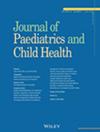Corrosive Substance Ingestion: When to Perform Endoscopy?
Abstract
Aim
Ingestion of corrosive substances is a difficult and important medical problem to manage. The aim of this study is to present an algorithm that will regulate the treatment and follow-up of paediatric patients with corrosive ingestion.
Methods
Children who were admitted to the paediatric emergency department with corrosive substance ingestions between July 2015 and December 2021 were included. Between July 2015 and January 2020, endoscopy was performed on all patients. After January 2020, endoscopy was performed only for patients presenting with hypersalivation and dysphagia.
Results
172 patients were followed up and treated in our clinic due to corrosive substance ingestion. Endoscopic evaluation of 19 patients with hypersalivation revealed oesophageal corrosion stages as follows: grade I in 5 patients, grade II-A in 1 patient, grade II-B in 3 patients, and normal findings in the remaining patients. Of the 14 patients with dysphagia, 1 had grade I, 2 had grade II-A, and 4 had grade II-B corrosion, and the remaining patients had normal endoscopic findings. In the long-term follow-up of the patients without hypersalivation and dysphagia, no complications developed and no additional treatment was required.
Conclusions
In patients presenting with suspicion of ingestion of high risk corrosive substances, there is no need for endoscopy unless hypersalivation and dysphagia are present simultaneously.


 求助内容:
求助内容: 应助结果提醒方式:
应助结果提醒方式:


